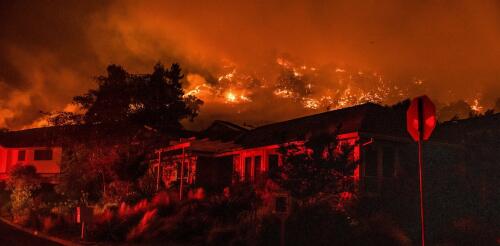US West
It can be tempting to think that the recent wildfire disasters in communities across the West were unlucky, one-off events, but evidence is accumulating that points to a trend. In a new study, we found a 246% increase in the number of homes and structures destroyed by wildfires in the contiguous Western U.S. between the past two decades, 1999-2009 and 2010-2020. This trend is strongly influenced by major fires in 2017, 2018 and 2020, including destructive fires in Paradise and Santa Rosa, California, and in Colorado, Oregon and Washington. In fact, in nearly every Western state, more homes and buildings were destroyed by wildfire over the past decade than the decade before, revealing increasing vulnerability to wildfire disasters. What explains the increasing home and structure loss? Surprisingly, it’s not just the trend of burning more area, or simply more homes being built where fires historically burned. While those trends play a role, increasing home and structure l...
As Western states haggle over reducing water use because of declining flows in the Colorado River Basin, a more hopeful drama is playing out in Glen Canyon. Lake Powell, the second-largest U.S. reservoir, extends from northern Arizona into southern Utah. A critical water source for seven Colorado River Basin states, it has shrunk dramatically over the past 40 years. An ongoing 22-year megadrought has lowered the water level to just 22.6% of “full pool,” and that trend is expected to continue. Federal officials assert that there are no plans to drain Lake Powell, but overuse and climate change are draining it anyway. As the water drops, Glen Canyon – one of the most scenic areas in the U.S. West – is reappearing. This landscape, which includes the Colorado River’s main channel and about 100 side canyons, was flooded starting in the mid-1960s with the completion of Glen Canyon Dam in northern Arizona. The area’s stunning beauty and unique...
The Salton Sea spreads across a remote valley in California’s lower Colorado Desert, 40 miles (65 kilometers) from the Mexican border. For birds migrating along the Pacific coast, it’s an avian Grand Central Station. In midwinter tens of thousands of snow geese, ducks, pelicans, gulls and other species forage on and around the lake. Hundreds of other species nest there year-round or use it as a rest stop during spring and fall migration. At the dawn of the 20th century, this massive oasis didn’t even exist. It was created in 1905 when Colorado River floodwaters breached an irrigation canal under construction in Southern California and flowed into a basin that had flooded in the past. In earlier years, the sea covered roughly 40 square miles more than its current size of 343 square miles (890 square kilometers). Since then, agricultural runoff from newly formed nearby irrigation districts has sustained it. By midcentury, the sea was considered a regional amenity...
In the arid American West, wildfires now define summer. Recent years have seen some of the worst wildfires in recorded history. Climate change, the loss of Indigenous burning practices and a century of fire suppression are increasing the risk of larger, hotter and more frequent wildfires. I’m a wildlife ecologist studying how the presence of wolves and other predators is affecting deer and elk in Washington state. I’m particularly interested in understanding how these species interact in changing landscapes. Habitat degradation and other factors have caused populations of mule deer, a common species in many parts of the West, to decline across much of their native range. My collaborators and I recently published a study examining how mule deer use forests that have burned, and how wildfires affect deer interactions with cougars and wolves. We found that mule deer use these burns in summer but avoid them in winter. Deer also adjusted their movement to reduce preda...



